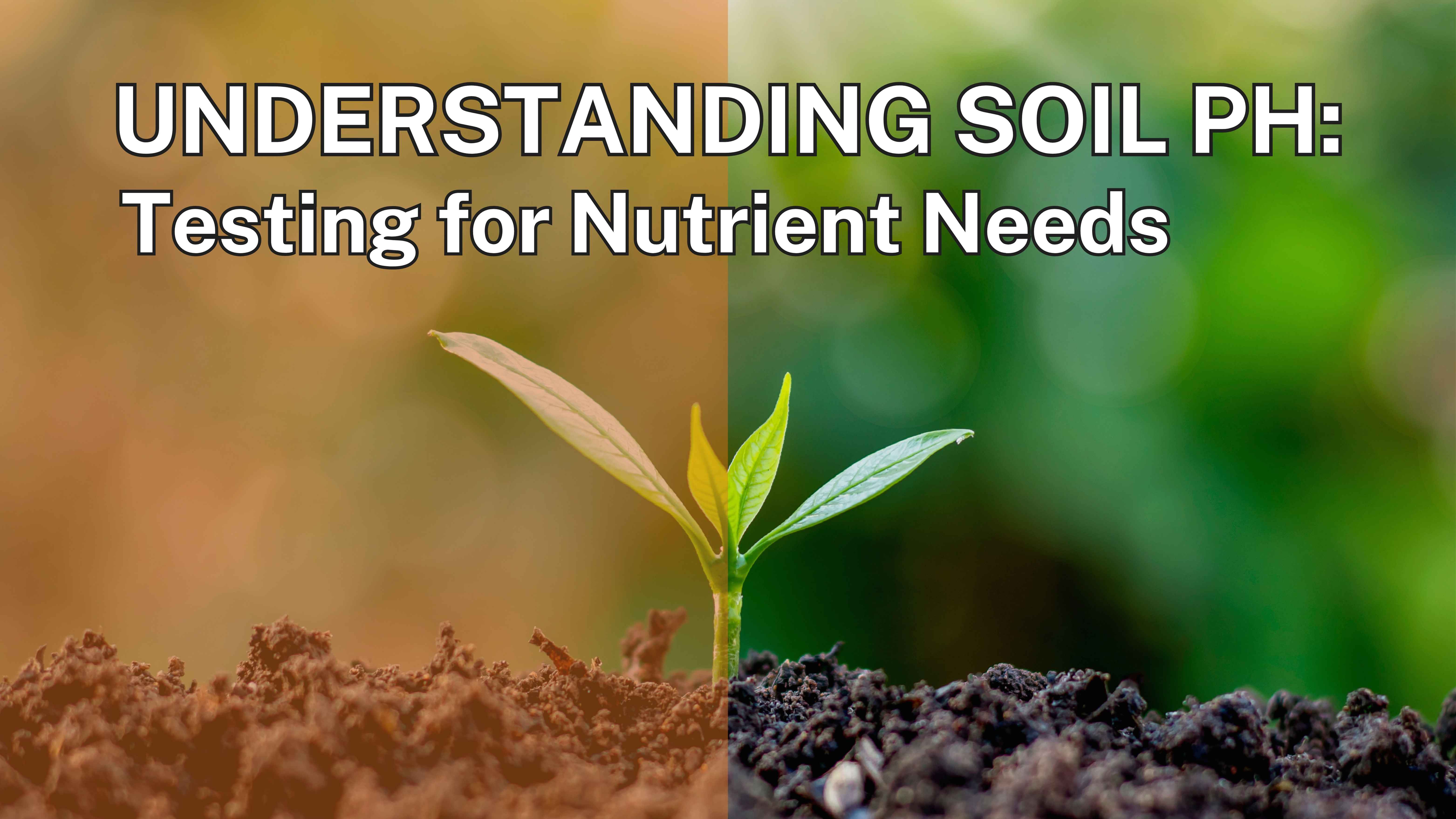Understanding Soil pH: Testing for Nutrient Needs

Soil pH plays a vital role in influencing plant health and the overall productivity of agricultural systems. The soil's acidity or alkalinity can directly impact nutrient availability, microbial activity, and plant growth. Understanding how to test soil pH and interpret its results can help gardeners and farmers optimize soil health and crop yields. This blog post highlights the importance of soil pH and provides guidance on testing and managing it for nutritional needs.
The Importance of Soil pH
Soil pH is assessed on a scale from 0 to 14, where 7 represents neutral; values below 7 indicate acidity, while values above 7 indicate alkalinity. The pH of soil affects several factors, including:
1. Nutrient Availability: Certain nutrients become more or less available depending on the pH level. For example, macronutrients like nitrogen, phosphorus, and potassium are most available in a pH range of 6 to 7.5 (Havlin et al., 2014). Conversely, high acidity can lead to nutrient deficiencies, especially in calcium, magnesium, and potassium.
2. Microbial Activity: Soil pH impacts the community of microbes present in the soil. Many beneficial bacteria and fungi thrive in neutral to slightly acidic conditions, enhancing organic matter decomposition and nutrient cycling (Smith et al., 2019).
3. Plant Growth: Different plants have specific pH preferences. For instance, blueberries thrive in acidic soils (pH 4.5-5.5), while asparagus prefers more alkaline conditions (pH 7-8) (Schulte et al., 2015). A mismatch between soil pH and plant requirements can lead to poor growth and yield.
Testing Soil pH
1. Why Test Soil pH?
Regular soil pH testing is essential for successful gardening and farming practices. It provides a baseline for understanding nutrient availability, guides fertilization practices, and helps develop soil management strategies.
2. How to Test Soil pH
Testing soil pH can be done through various methods, including DIY kits, pH meters, or sending samples to a laboratory. Here’s a brief overview of each method:
DIY Kits: These are widely available and typically involve mixing soil with water and a pH indicator solution. The resulting color change can be matched against a scale to determine the pH level. While convenient, these kits may not always provide the most accurate results (Miller, 2020).
pH Meters: Soil pH meters are more precise. They require calibration before use but can provide immediate results. For accurate readings, it's important to follow the manufacturer’s instructions (Havlin et al., 2014).
Laboratory Testing: Sending soil samples to a laboratory is recommended for the most reliable results. Labs often provide detailed reports, including pH levels and nutrient content, which can inform soil amendment decisions (Schulte et al., 2015).
3. Collecting Soil Samples
To obtain an accurate pH reading, it’s essential to collect soil samples correctly:
Choose Locations: Take samples from multiple spots for a representative garden average. For larger fields, divide the area into sections and sample each one.
Depth: Usually, samples should be taken from the top 6-8 inches of soil, where most root activity occurs.
Drying and Mixing: To ensure uniformity, allow the samples to air-dry and mix them well before testing.
Interpreting Soil pH Results
Once soil pH is determined, understanding its implications for nutrient availability is crucial.
1. Nutrient Availability by pH Level
Acidic Soils (pH < 6.0): In very acidic soils, nutrients like aluminum may become toxic, while essential nutrients such as calcium and magnesium may be deficient. Soil amendments like lime can help raise pH and improve nutrient availability (Miller, 2020).
Neutral Soils (pH 6.0-7.0): This range is ideal for most crops, providing balanced nutrient availability. However, regular monitoring is still necessary to ensure that the pH remains stable.
Alkaline Soils (pH > 7.0): Alkaline soils may lead to iron and manganese deficiencies, which can cause plant chlorosis. Acidifying agents such as sulfur can help lower pH in these conditions (Schulte et al., 2015).
2. Soil Amendments
Depending on the pH results, specific amendments can be applied to adjust soil conditions:
Lime: Applied to raise pH in acidic soils. It provides calcium and can help reduce aluminum toxicity.
Sulfur: Used to lower pH in alkaline soils. Microorganisms convert sulfur to sulfuric acid, effectively acidifying the soil over time.
Organic Matter: Incorporating compost or well-rotted manure can help buffer pH changes and improve soil health.
Managing Soil pH for Optimal Nutrient Uptake
1. Regular Monitoring
Soil pH can change due to various factors, including rainfall, irrigation, and crop type. Regular testing (every 1-3 years) is essential for maintaining optimal conditions.
2. Crop Rotation
Implementing crop rotation can help manage soil pH. Different crops have varying pH requirements and nutrient uptake patterns. Rotating between acid-loving and neutral/alkaline crops can balance soil conditions over time (Smith et al., 2019).
3. Cover Crops
Planting cover crops can also benefit soil pH management. Certain species, like clover, can help fix nitrogen and improve soil structure, while others can contribute organic matter and help buffer pH fluctuations.
Conclusion
Understanding and managing soil pH is essential for optimizing nutrient availability and ensuring healthy plant growth. Regular testing, careful interpretation of results, and timely amendments can significantly enhance soil health and, by extension, crop productivity. By implementing these practices, gardeners and farmers can create a more sustainable agricultural environment supporting plant and soil health.
References
Havlin, J. L., Tisdale, S. L., Nelson, W. L., & Beaton, J. D. (2014). *Soil Fertility and Fertilizers*. Pearson.
Miller, R. O. (2020). Soil Testing: A Guide for the Home Gardener. *Journal of Soil Science*.
Schulte, E. E., & Hopkins, B. G. (2015). Soil pH and Organic Matter. *Soil Science Society of America Journal*.
Smith, J. L., & Doran, J. W. (2019). Measurement and use of pH in soil fertility assessment. *Agronomy Journal*.